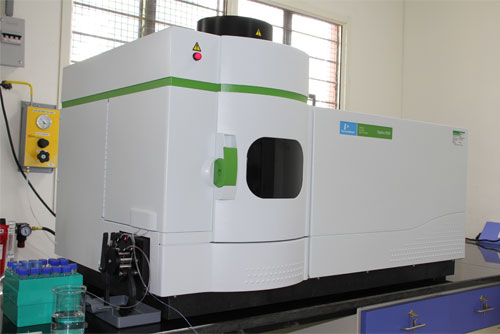Which Elemental Analysis Technique is right for me?

Trace element studies play an important role in environmental monitoring and industrial quality control in areas of foods, pharmaceuticals, petrochemicals, geology and mining, forensic investigations, clinical studies and power generation. The commonly accepted techniques providing acceptable levels of precision and accuracy are Atomic Absorption Spectroscopy, ICP – OES and ICP – MS. In this article the scope along with advantages and disadvantages of each of these techniques is discussed to help you to take a decision in favour of the technique that is right for your analysis .Before going into the merits and de-merits of individual techniques you should try to answer the following questions
- Number of samples to be analyzed
- Required sample digestion technique
- Which elements are required to be analyzed and their concentration levels
- Quantity of sample available for analysis
- Requirement for reporting isotope ratios of species present
- Initial cost and cost per analysis
- Special training requirements for operation and analysis of data.
You will realize that this checklist is exhaustive and generally applicable for most analysis techniques. Now we shall proceed to offer guidelines on selection of technique against your specific requirements.
Flame Atomic Absorption Spectroscopy
Benefits
- Lower price in comparison to ICP – OES and ICP – MS
- Mature technique with large base of established methods
- Analysis time per element is around 10 seconds
- Concentration range sub- ppm – ppm levels
- Simple to operate and not requiring specialized skills
- Lower cost of operation
- Can handle up to 5% dissolved solid samples
- Sample size requirement from about 5 to 8 ml
Disadvantages
- Analysis of elements is possible one at a time.
- Only fraction of sample reaches the flame and residence time in flame is also small
- Linear dynamic range around \(10^3\). Dilutions would be necessary for concentrated solutions
- Isotopic studies not possible
- Unattended operation not possible
Graphite furnace atomic absorption spectroscopy
Benefits
- Higher sensitivity of up to sub – ppb levels
- Low sample volume requirement 0.2 – 1 ml
- Unattended operation possible
- Can handle higher concentration of dissolved solids upto around 10%
Disadvantages
- Cost higher than flame AAS and involves additional operational expenses
- Analysis time per element is longer than flame AAS
- More interferences than flame AAS
ICP – OES
Benefits
- High detection limits from sub- ppb – ppm levels
- Simultaneous analysis of more than 40 elements in each sample per minute
- Cost higher than flame AAS but lower than ICP- MS
- Large linear dynamic range \(-10^6\)
- Unattended operation possible
- Capacity to handle high dissolved solid samples up to 20%
Disadvantages
- Time of analysis 1 – 5 min/sample
- More interferences than flame AAS
- Isotopic studies not possible
ICP- MS
Benefits
- Ultra trace detections up to sub-ppt levels possible
- Linear dynamic range is highest up to \(10^8\)
- Multi element analysis up to about 40 elements in same time as for ICP-OES analysis
- Isotope ratio studies possible
- Low sample volume consumption 0.02 – 2 ml / min
Disadvantages
- Higher initial cost and cost of operation
- Can handle only up to 0.2% level of dissolved solids
- Special operational skills requirement for good quality of results
In summation as an analyst you will have to decide on which technique is ideal for your applications keeping budget availability in mind.
Hi,
Do you have any training media available which we can use to train lab analysts as to how to do dilutions correctly and accurately? If you have for instance a stock solution of 2 000ppm and you need to dilute that down to 100ppm for instance.
Please advise
Regards
Hi Linette,
Hope you find the article published today useful.Please go through the link https://lab-training.com/2014/10/29/important-role-dilutions-quantitative-estimations/
How can you assist in procurement of the above analytical equipment for a small upcoming Lab. What advice do you consider important in regard to equipment sourcing.
Dear Togenu,
An article on this topic was published earlier. I am providing you the link. Hope you will find the suggestions useful.
https://lab-training.com/2014/05/15/what-are-the-essential-considerations-for-purchase-of-sophisticated-analytical-instruments/
How would you rank an X-Ray Fluorescence Spectrometer in comparison to a flame AAS. Is XRF fairly accurate and precise? Should XRF only be used for a general range of the concentration of elements in sample?
Hi Torri,
X-ray fluoresence is a more sophisticated technique for elemental analysis and has its own benefits. However,I would recommend AAS for routine sample analysis because of cost benefits